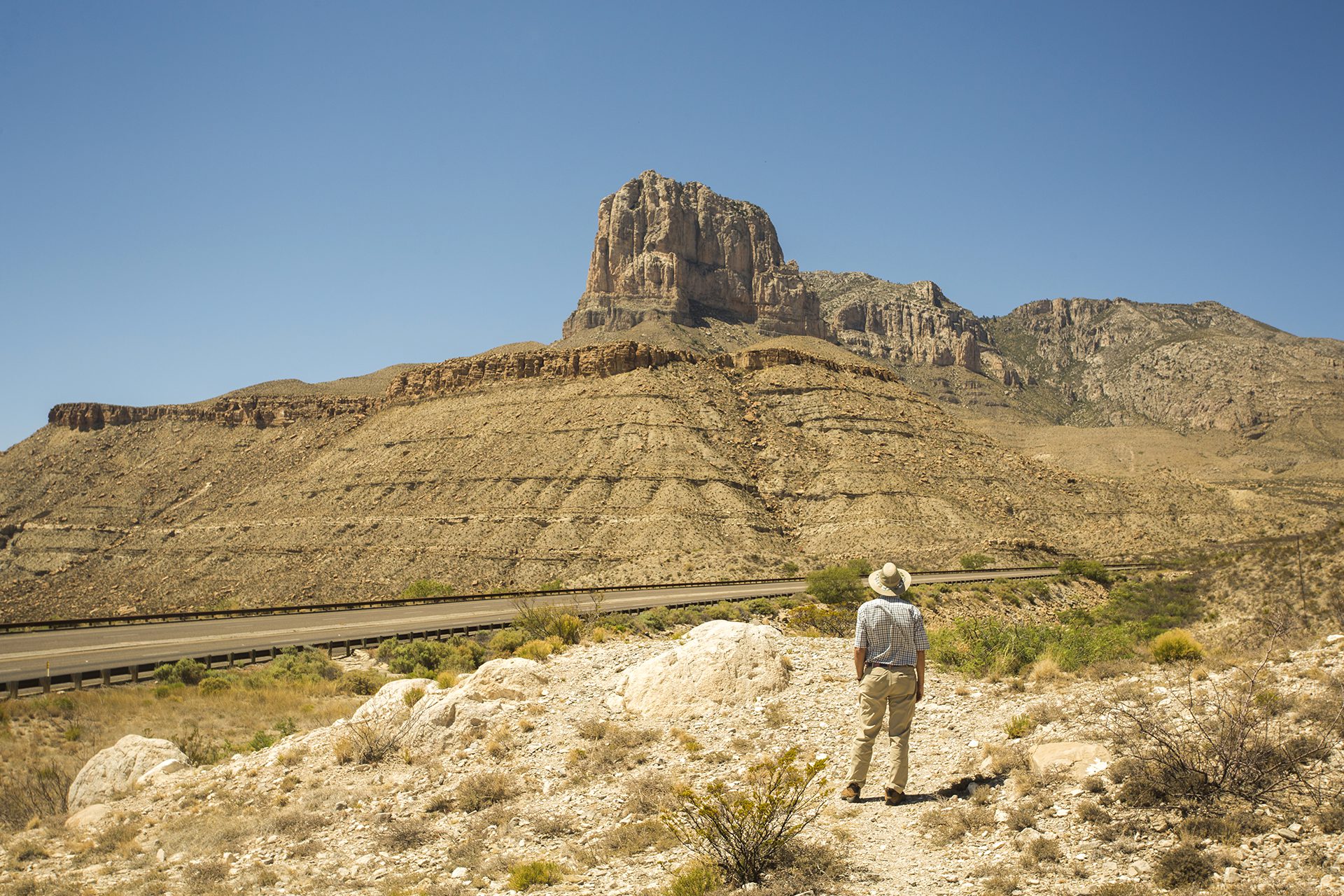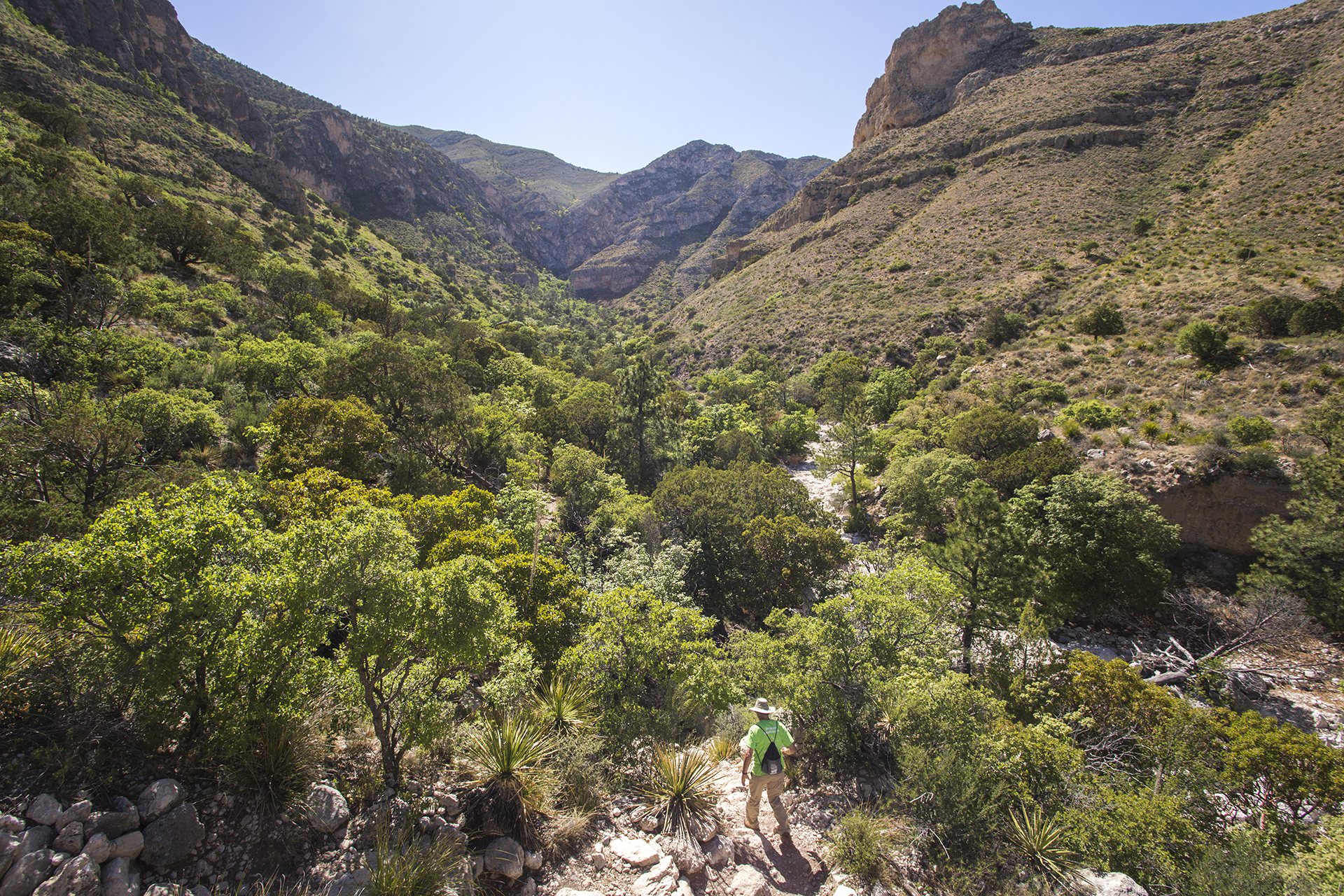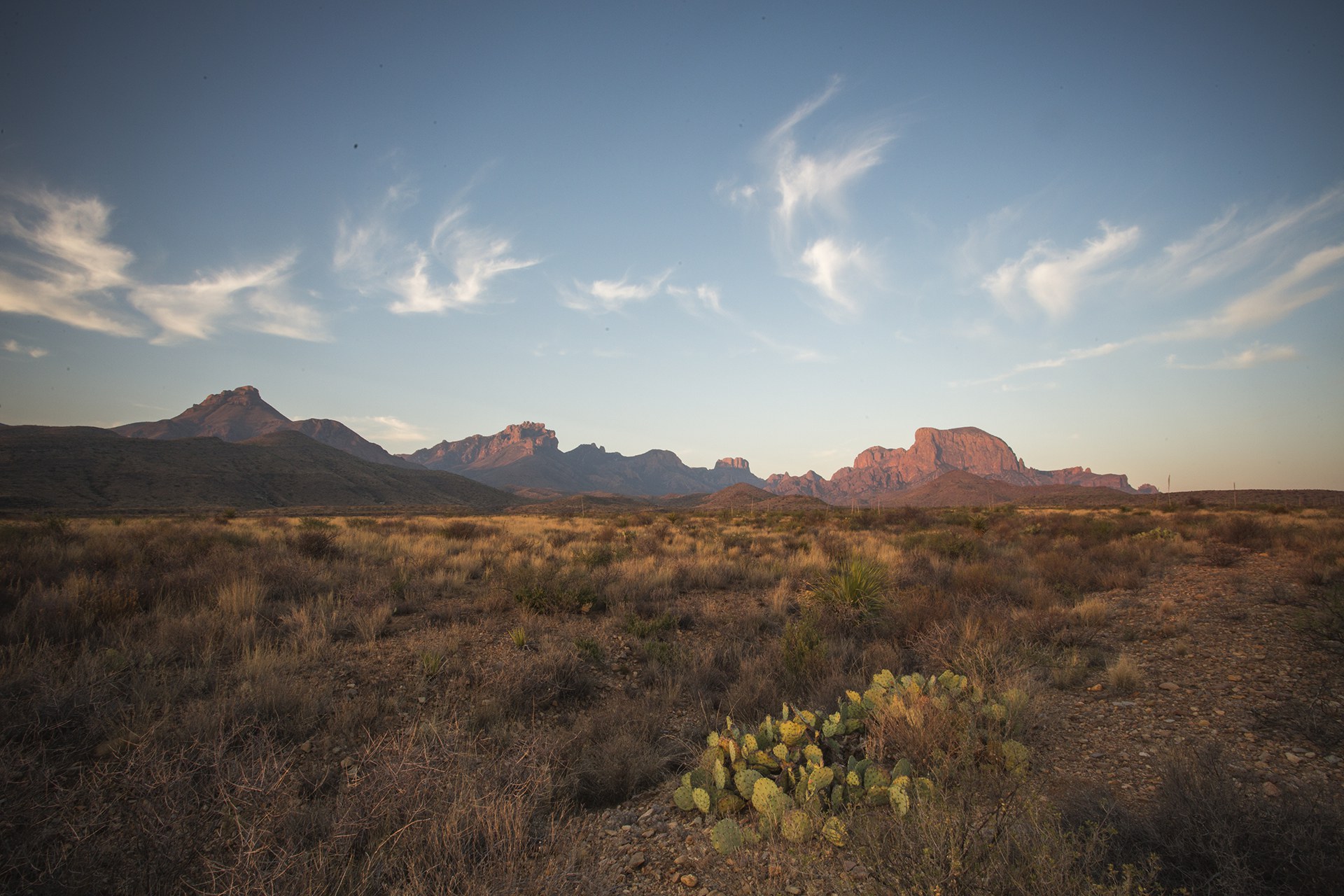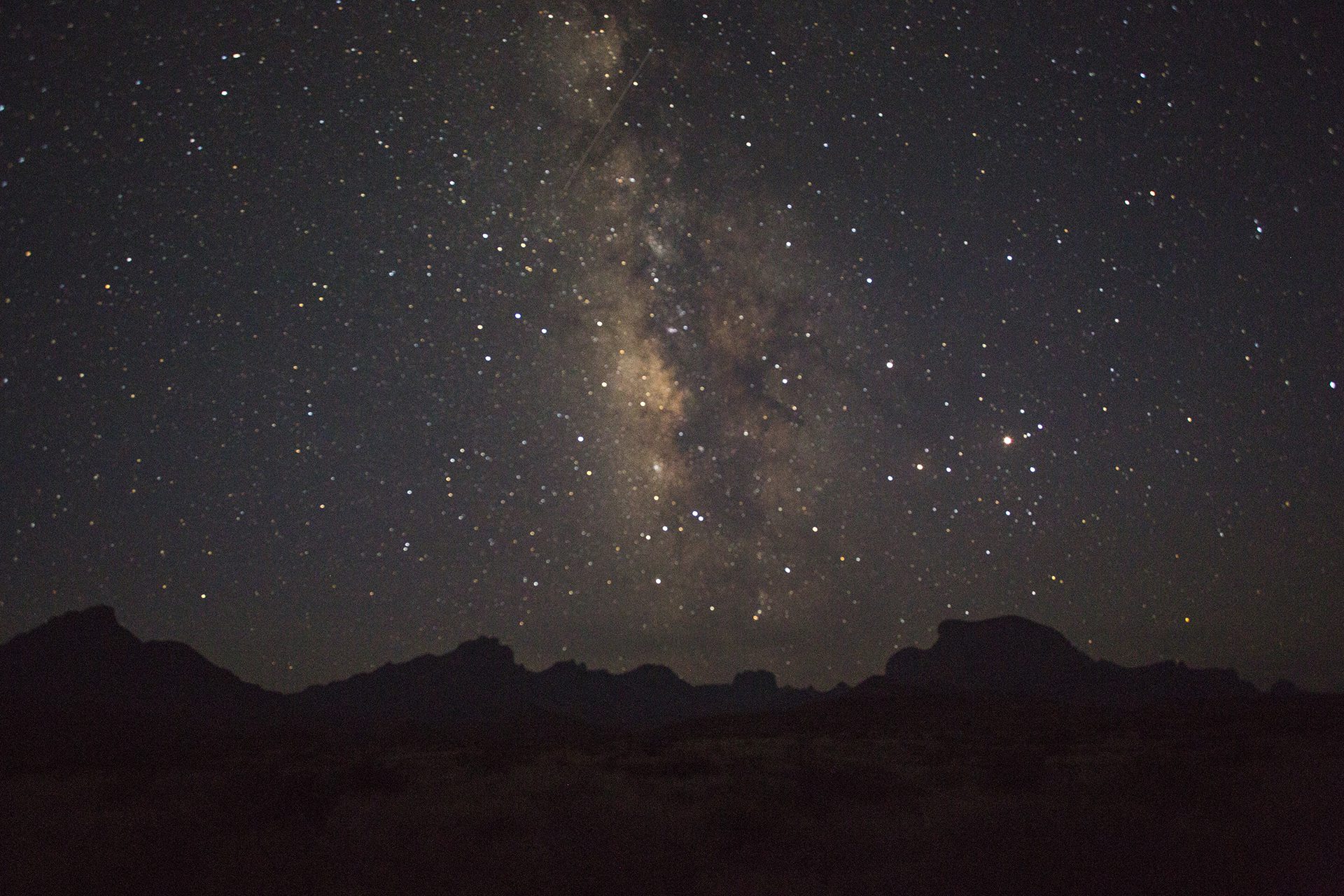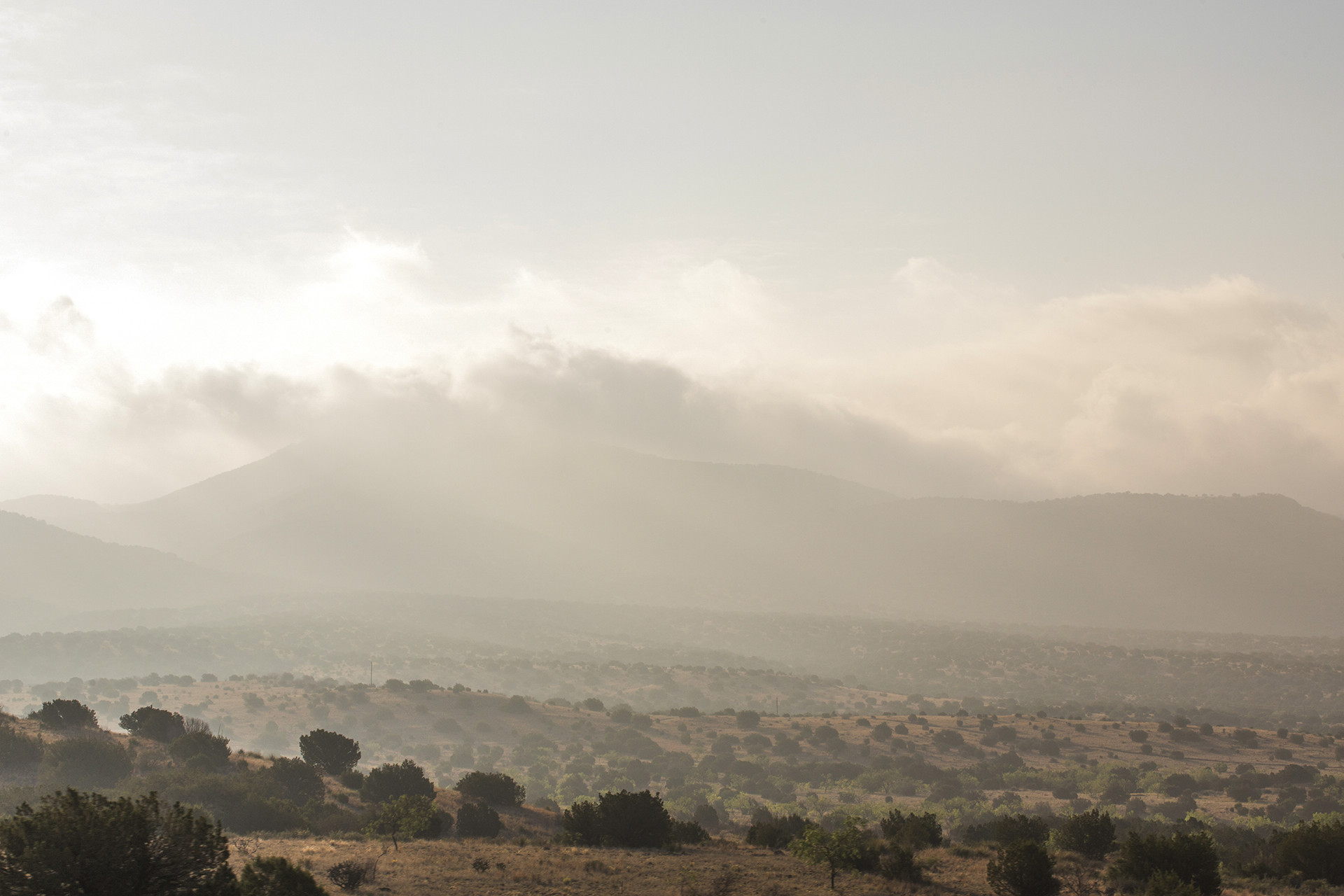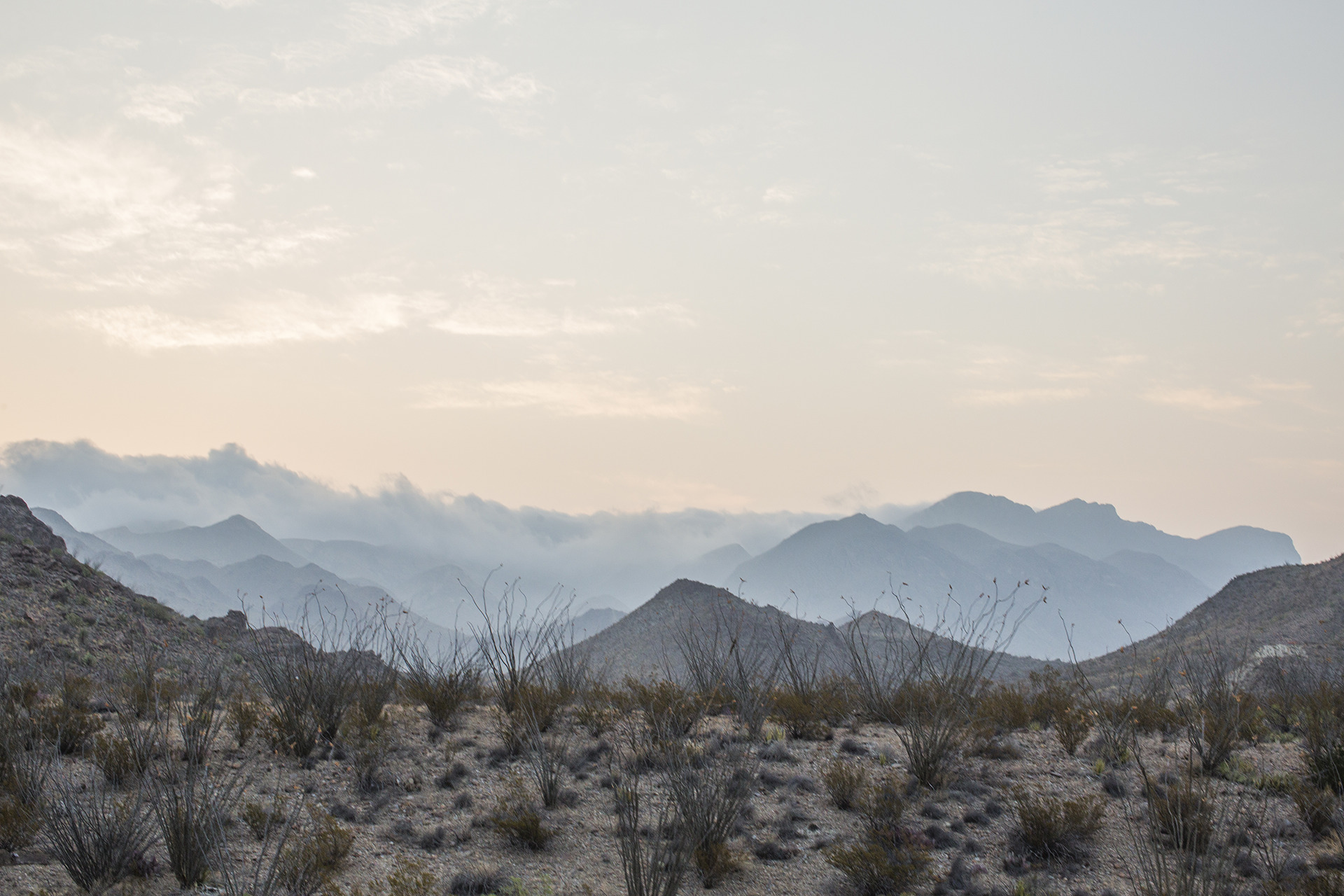For the last several summers, writer and photographer David Hanson, a Georgia native gone west, has hiked a series of national parks with his father. As they’ve hiked, they’ve talked about the South, family, distance, fatherhood, baseball — and occasionally, a little politics. Last week, the U.S. National Park Service celebrated its 100th birthday. All who visit the parks look for what President Theodore Roosevelt called “the hidden spirit of the wilderness.” This story is about how that spirit moves inside one outdoorsman and his dad.
Story, Photographs and Recordings by David Hanson
“A working definition of fathering might be this: Fathering is the act of guiding a child to behave in ways that lead to the child's becoming a secure child in full, thus increasing his or her chances of being happy and fruitful as a young adult.”
— Clyde Edgerton
“Papadaddy’s Book for New Fathers”
2013
“Yeah,” I think.
“Nah,” Dad says.
It’s a convertible. An American-made muscle car, the exact color and gloss as banana-flavored Runt candy, squat as a wolverine, and Alamo is going to let us drive it for five days.
Dad stops dead in his tracks, leaves his roller luggage in the middle of the parking lot, and turns back toward the ticket counter.
“This is ridiculous” is all he says.
He’s right, of course. Why would we want a convertible for a desert road trip in May with temperatures in the 90s and 30-mph winds carrying tumbleweed torpedos? Dad’s fit, but he’s 70. Getting in and out of the bucket seats is a level-four cross-fit move. And I have no interest in cars. In half a lifetime of waiting room sitting, I’ve never once flipped through an issue of Car & Driver. Nor is this a mid-life crisis story. I wanted the Camaro for the irony of buttoned-up Brooks Brothers Dad and Patagonia-plaided me ripping past cactus and oil drills in a 300-horsepower Kardashian prop. The Instagram pics would be priceless: Dad on the hood in hiking boots and floppy hat, us wearing scarves and colorful sunglasses pointing finger pistols into the air a la Thelma and Louise….
My imagination wandered until Dad returned, grabbed his bag, and led me to a gray Nissan Altima sedan.
“Much better,” he says. “We’d’ve scared away the wildlife.”
This is not our first rodeo with father-son road trips. He wouldn’t call it a bucket list because that’s for old farts, but five years ago, Dad decided he wanted to see all the national parks, beginning with a tour of southern Utah (Zion, Bryce, Canyonlands, Capitol Reef, Arches). My mom considered joining, then bailed, citing a Southerner’s aversion to places with no trees. I was living in Seattle, a freelancer trafficking heavily in the time-over-money economy. A decade earlier, I’d lived and worked in Yosemite, Olympic and Voyageur National Parks. The old man couldn’t roam through southern Utah, a place I’d explored by foot, bike, climbing rope and geology class, without me.
After that inaugural trip, my younger brother Michael got jealous, so the next year he took Dad to North Cascades and Glacier National Parks. Since then, Dad’s been with Michael or me to Grand Canyon, Kings Canyon, Sequoia, Congaree, Olympic, Yosemite and Mt. Rainier. His total currently hovers at 26 parks, each represented by a shiny pin affixed to the brim of his floppy hat. This year’s objectives are the desert beauties of Guadalupe and Big Bend National Parks and the giant bat cave that is Carlsbad Caverns.
We pull out of the Alamo lot and head east. We have five days, 900 mostly radio-free miles and no podcasts.
As I’ve gotten older and settled into a distant corner of the U.S., I’ve wondered how far I fell from the family tree. Sometimes it seems our tree was rooted on a subtle slope, and I’ve been rolling downhill for decades.
I rode my first and only elephant beside Atlanta’s Peachtree Road at age 6 during a Reagan-Bush campaign rally. That was also my first photo op with a first lady, Nancy Reagan. My second came four years later with Barbara Bush’s hand on my shoulder. During election season I’d sit side-saddle on the Volvo’s passenger door and tuck candidate (R) flyers into mailboxes while Dad drove slowly through the Atlanta suburbs.
At age 10, I stood on the floor of the Republican National Convention. I remember the confetti falling from a Superdome ceiling big enough to be its own galaxy and thinking my dad was a boss, towering over me with his Georgia State Delegate badge affixed to his blue blazer. (I recall only two other things from that trip: Michael Jackson’s uncanny likeness in the Musee Conti wax museum, and glimpsing my first non-mom boob through the fluttering doorway curtain of a strip club.)
I said yes m’am and no sir and was an altar boy who never missed Sunday mass. I attended a fine liberal arts school in Virginia that is basically a waiting room for Wall and K Streets. When I declared my geology major, Dad asked what I’d do with that so I doubled down with an English degree.
Now, I live in a small Oregon town, married to a West Coast girl who’s been to church twice and whose family openly laughed at me when I employed yes m’am to the mom. I’m a registered Democrat. Dad and I used to butt heads frequently as my ideas followed my geography left. He seemed so static, rooted back there with the family tree. Meeting Dad in El Paso, exactly halfway between Atlanta and Portland, ticking off a few more national parks, and talking about the South, family, distance, fatherhood, baseball, anything but politics is a good, important way to spend a week, convertible or not.
El Paso dwindles to a sporadic strip of dusty auto garages and taquerias stuck like a movie set façade against the looming brown desert. Some might say the real South dries out somewhere back in not-so-west Texas near Wink or Mentone or where the Pecos River makes its death-defying run down the Chihuahuan Desert’s eastern edge, but technically speaking the American South ends in a pinch of cactus, low brown hills, shopping centers, and alien-green golf courses where Texas, Mexico, and New Mexico collide beside the miraculous Rio Grande.
In the Chihuahuan Desert, the third biggest in the western hemisphere, the horizon shimmers away with the earth’s curve. I look down to consult the torn, sun-faded AAA map Dad has brought despite the iPhone 6 in his pocket, and when I look up again there’s a hazy form like the prow of a sunken ship on the tan horizon: Guadalupe Mountains National Park.
We head to the visitor center for the park pin. Dad has a propensity to collect things – not your stereotypical manly things like big-game taxidermy or motorcycles. Most weeks he visits Tony Rozen’s crammed stamp store on the 14th Floor of a downtown Atlanta financial building, adding to the collection he began at age 10. At home, he spends hours at the polished dining room table poring over puzzles, quietly but audibly cheering himself on when he taps a challenging piece into its place. So, the idea to collect National Parks came naturally. There they are on the map – 59 green puzzle pieces.
The visitor center won’t have park pins until July. Dad will have to order his online. We fill water bottles and start down the Devil’s Hall Trail, leaning into a headwind. A beach ball wouldn’t last 10 seconds out here. Everything’s pokey and beautiful. The long, slender ocotillo grow 10 feet high like a clump of marooned sea grass. The lechuguilla’s rosette of curving, black-tipped leaves, the sotol’s 10-foot cattail. And, of course, the agave tequilana with its towering stalk solid enough to house birds and its leaf tips eager to poke three inches into my calf.
There’s no polish and little margin for error. The rugged Guadalupe Mountains were one of the last strongholds of the Mescalero Apache, fierce nomadic hunter-gatherers who learned to thrive in this environment, establishing camps of “Wicki-up” tents in the high meadows and valleys. In one of the more tragically ironic episodes in American history, the U.S. government sent Buffalo Soldiers, mostly freed slaves and black Civil War vets, to engage in violent suppression and eradication of the Guadalupe Apache. The soldiers were relocated after defeating the Apache, leaving the mountains to outlaws and legends, most notably Ben Sublett, an enigmatic single father who’d spend days alone in the Guadalupes, returning to buy rounds of drinks with pure gold nuggets before dying without bothering to tell his children his golden secret.
Dad could make it up the four miles and 3,000 feet of elevation gain to Guadalupe Peak, but the knee-pounding descent might wreck him for the rest of the trip. Captain of the Randolph-Macon College tennis team, he remains sporty, still playing a tough match at least once a week. Seven years ago he surprised me when he started volunteering on the trail crew at Atlanta’s Chattahoochee National Recreation Area. I gave him a hand-me-down pair of waterproof hiking boots and he took to the simple trail-grading, downed-tree removal and flood debris pick-up.
Twenty years earlier, I surprised Dad when I asked for his old backpack, an LL Bean, aluminum-framed beast he was putting in the garage sale pile, its faded blue nylon pockets holding his own legends and secrets laid down before I was even a thought. He used to spend weekends backpacking in North Carolina's Pisgah National Forest until his best friend and hiking partner fell prey to cancer. My brother and I arrived, and for the next two decades we showed no interest in outdoor activities that didn't involve ball sports.
I remember as a teen beginning to make headway toward beating Dad in ping-pong. It had seemed an impossibility growing up. As the competition leveled out and the games got closer, Dad eventually came clean and switched hands to his dominant left. I'd never noticed he was sandbagging. I've still never beat him, which feels right, my childhood notion of the natural order of things remaining intact. But time shines truer out here in the harsh wilderness. It illuminates my new responsibility. I keep an eye on my dad.
After walking two miles in a dry creek bed of bleached white limestone rocks, Dad’s getting impatient or tired. We take frequent breaks, excusing it as a search for fossils. It’s been two years since we hiked in Grand Canyon, and he’s not as nimble. His lungs seem to be working harder.
A year ago prostate cancer showed up, as it seems to do with most men his age. Dad would call regularly with updates and to breakdown his options for treatment. He’s a factual, literal man, so he dealt well with the clearly defined medical course of action. We never talked about what-ifs or the emotional stuff, but age and decline had suddenly entered the equation.
A couple from Germany passes our reverie. They are roughly Dad’s age and tell us the Devil’s Hall is only 15 minutes further and well worth it. We trudge on. Soon, the canyon walls close in and the creek bed takes a hard left toward a natural staircase of layered gray rock. We carefully climb it using hands and feet, then continue along the smooth bedrock floor until the gorge narrows, wide enough for a single lane of traffic. This is the Devil’s Hall, where the cream-colored, striated walls rise 80 feet overhead. We take a seat in the cool shadow, and I ask Dad if he’s upset that I left the South.
A broken elevator should not be of concern in a national park, but Carlsbad Cavern is an 800-foot deep hole in the earth. To see it, or at least reach the bottom to purchase an ice cream sandwich at the world’s most unlikely concession stand, you must walk down the steep, paved path. Originally exploited for its 100-foot-deep bat guano deposits, the cave was first accessed by sightseers via a pulley system and giant guano sacks. The elevator came in 1932 and recent, prolonged malfunctions have detracted visitors and threatened the efficacy of Carlsbad Caverns National Park.
On our way into the entrance, an older gentleman lounges near the cave’s mouth where the scent of decomposing bat excrement hangs on the air and the trail serpentines downward as if an opening stage for Dante’s “Inferno.”
The man looks down, slowly shaking his head. “No way, no how,” he says loudly to his wife, as if to be sure there are witnesses. “Not if you hauled me down in a truck, put me on a train or flew me in there. I just don’t like caves.”
Otherwise, the lack of an elevator is not deterring dozens of people from walking down the cave on this Sunday. Joining Dad and me are families with toddlers in backpacks, giggling 20-somethings hiding Mexican beers and retired couples resting on the stone benches at the trail’s sharp switchbacks.
The trail corkscrews around collapsed chunks of limestone the size of houses, under milky chandeliers of stalactites and within an arms length of smooth, phallic stalagmites. Finally, the thigh-pounding descent ends, and the trail loops for a mile through the flat Big Room, North America’s largest single cave chamber by volume, complete with stadium-size restrooms and the glowing concession stand. This is the National Park System at its most confounding: Part of the mind feels at ease, as if we’re in the center of a mall’s damp, dimly lit food court. Then, the primitive side of the brain remembers that we’re 800 feet under an inhospitable desert in a real cave with potentially loose rocks and only one way out. We can be so easily lulled by the safe trappings of the “normal” world that we forget the parks are not amusement rides with on/off switches.
Dad and I sit on the bench in the concessionaire’s green halo and talk time. One thing we have in common is a love for history. Just not the same history. He prefers 500-page accounts of European monarchs, Roman empires or specific battles in World Wars. I like million-year-old stories of rocks and rivers. It took a few days of reading roadside geology plaques during our southern Utah road trip, but Dad eventually began to understand the long-form power of water and time. Sexy things like faults, plate tectonics and volcanoes play a role, but for the most part places as dramatic as Zion’s deep red canyons or the intricate formations of Carlsbad Cavern can be explained by the simple act of water moving across rock. For thousands or millions of years.
These Carlsbad walls were once squishy algae and sponges, part of a horseshoe-shaped reef that ringed an inland sea covering southern New Mexico and west Texas. This was the Permian period, 250-300 million years ago when the continents were one big, connected mass called Pangaea. Eventually the land rose, plates shifted, the continents broke apart (Appalachian hills share a heritage with the Scottish Highlands and Morocco’s Little Atlas Mountains), and the inland sea was cut off from the ocean and left to evaporate. The reef compacted to a limestone layer buried under thousands of feet of sediment.
Water slowly dissolves the highly soluble limestone to create most of the world’s caves, but in the case of Carlsbad’s 119 known caverns, the story differs. The erosion and cavity scouring here happened quickly, thanks to oxygen, unique microbes and Permian Basin oil deposits combining in the water table to form sulfuric acid that cut through Guadalupe’s limestone like a hot knife through butter.
"I worked my way through the rocks and brush until I found myself gazing into the biggest and blackest hole I had ever seen, out of which the bats seemed literally to boil.”
Fifteen-year-old Jim White, an illiterate cowboy, described his discovery of Carlsbad Cavern in 1901. He was mending fences when he saw a black cloud emerge from the desert scrub on a non-descript plateau of the Guadalupe Ridge. He went to investigate and came away with a lifelong obsession to explore the cave’s mysterious depths. For years, he was the only one interested in the seemingly endless cave system, exploring it alone with an oil lantern. His descriptions – “Walls that were frozen cascades of glittering flowstone, jutting rocks that held suspended long, slender formations that rang when I touched them — like the key on a xylophone” – are recounted in the book “Jim White’s Own Story,” a transcription. It’s available in the visitors center. I perused it while Dad picked out his pin.
After a siesta at the Best Western in the town of Carlsbad, we pick up barbecue sandwiches and drive back into the desert an hour before sunset. Other than the cave itself, the evening bat flight is the main draw to Carlsbad National Park.
A broad amphitheater ringed in white and tan limestone benches overlooks the cave’s mouth. About 70 people sit scattered around it. Ranger Josh Nelson, a dead ringer for a young Bradley Cooper, holds court as the sun sets behind us and the eastern sky softens to a pale blue. The day’s strong wind eases to a breeze.
Josh convincingly breaks down the myths about bats. They don’t suck people’s jugulars. They lightly graze an animal and then lap up trace amounts of blood. If they carry rabies, they are likely too sick to fly, so if you see a bat on the ground, don’t touch it. It’s a wild animal, for God’s sake! Plus, they’ve got far too many problems trying not to become extinct from white-nose disease to worry about us.
He tells us to be absolutely silent during the flight. We must shut off our phones and cameras – electrical devices can disrupt the echolocation, and too much noise might spook them back into the cave. And with that, the miracle begins: Everyone obeys, and a random collection of humans sit silently, without the tiny prisms of LCD screens, waiting for bats to emerge from a hole in the earth and fly over the spindly outlines of ocotillo and sotol, giving pattern to the vast lavender sky and etching a memory into brains instead of 32GB hard drives.
The little black specks swirl counterclockwise from the cave, at first a few, then hundreds. The cylindrical mass rotates and curls eastward toward the Pecos River. A baby behind us makes noise. Dad flinches. I know he wants to shush it, and then I’ll want to shush him, but he stops himself. The desert is quiet and soft, and the bats are OK.
In 2013, Pecos County, Texas, produced more energy (oil, natural gas, wind) than any other county in Texas. Hydraulic fracking techniques yielded a boom from Permian oil deposits. This explains why the sleepy town of Carlsbad, New Mexico, population 27,000, has more than 20 hotels. They line the main artery of Canal Street, their distinctive architecture coinciding with the town’s sporadic booms: livestock (late 1800s), potash (1920s), national park creation (1930), low-level nuclear waste burial site and first oil and gas boom (1980s) and the recent fracking boom (early 2010s).
Dad and I check out and head south, past five new chain hotels that popped up during the recent boom when basic hotel rooms were $300 a night and heavy-duty contractor trucks flooded the city streets. Our route south to Big Bend National Park takes us through the heart of the Permian oil fields on Highway 285. A wildfire has started in the far corner of the Guadalupe Mountains, and the strong westerly winds blow the yellow smoke over the Pecos River valley. It mixes with dust plumes trailing off 18-wheelers that cut across the 285’s tributary roads. There’s a Mad Max feel to the Permian.
Suddenly, like a faded mirage, we pass a small wooden shack with a faded Texas flag painted on the roof and an open sign hanging from the front porch. I ask Dad to turn the Altima around.
Ben Klein and his brother own 100 acres of cactus, rattlesnakes and coyotes. Ben is retired Navy. He now ascribes to a life of orthodox bachelorhood: drinking light beer, reading Clancy, Grisham and Baldacci, and manning the K&K store, a one-room shack of VHS rentals, paperback thrillers, porcelain figurines, gauzy paintings, satellite radio and a vintage ice box full of sodas and Bud Lights. Ben brings us a couple 7-Ups and cracks another Bud Light for himself. It’s 10:30 am. Dad signs his name among hundreds of others on a porch rafter, proudly proclaiming that he now has his name on a building. Then, he asks Ben about the fracking process. Listen to Ben explain here:
Dad leaves Ben with a $20 bill to cover our sodas, the two Grisham paperbacks he’s taking, and my nosiness. We merge back into the oil and gas parade. Here we are, in the same car, looking out the same windshield, with the same blood and hair and deep-set eye sockets. I’m agonizing over fracking’s dangerous meddling with desert aquifers and my total lack of faith in the industry’s conscience. Dad’s awed by the industrial ingenuity of man and his ability to reap life-sustaining energy and millions of dollars from such an otherwise desolate, useless land. My impulse is to incite a debate, to roll back to that old rigid tree, rattle it and maybe even pick it up and move it. I don’t like this impulse, and it never ends well, but there’s something about our fundamental disconnect that’s mystifying and frustrates me enough to keep poking at it, rousing the beast I imagine between us.
I hold my tongue and gaze into the western horizon, hazy from a fire we can’t see, deep in the Guadalupes. The radio grabs a country station long enough for one Marty Stuart song as we pass through the dust-blown town of Pecos, then it’s back to the hum of rubber on hot pavement and our own thoughts as we move out of the Permian and into Big Bend country.
Somehow, the 801,163 acres of Big Bend National Park sneak up on us. Approaching Marathon, Texas, the flat landscape begins to ripple and bulge. It continues that way for another 40 miles to the National Park entrance, which is just a sign in the vast windiness.
In the southeast, a towering thunderhead rises out of the brown horizon. We speculate that it’s the jet stream in action, demarcating the blue-sky desert from a Gulf of Mexico storm unloading record-setting rainfall over central Texas. We are 100 percent wrong. The open space continues to play tricks on us. As we get closer to the end of the country, it becomes clear that the thunderhead is a giant plume of wildfire smoke, this one 30 miles away in Mexico’s Sierra del Carmen Mountains.
We climb the long ramp of earth toward the Chisos Mountains, a fist rising 4,000 feet from the desert, and the park’s centerpiece. The final seven miles is a twisting ascent into the Chisos Basin, a road built in the 1930s by Civilian Conservation Corps kids equipped with picks and shovels (a rare government program my Dad and I both appreciate). Dad again marvels at the intricate rock sculptures, towers and dry waterfall pour-overs that detail the range. Maybe we’ll witness a rare thunderstorm and see the fluid chisel at work.
The Chisos Mountain Lodge is basically a Days Inn surrounded by sublime backcountry. A fortress of yellow peaks surround the Chisos Basin. A dramatic V-shaped notch, aka “The Window,” opens so perfectly to the west that it seems the CCC kids cut it out of the mountain to create the sunset postcard view. We check into our room and go straight to the visitors’ center for Dad’s pin.
The desert is three worlds: night, day and the twilight in between. Dad and I wake at 5 a.m., eat bananas, and drive the Altima out of the Chisos Mountains and into the darkness. The Milky Way is an orange veil above the jagged horizon. Jackrabbits dart across the pavement. Dead ahead, the Sierra del Carmen massif, another former reef solidified to limestone, takes shape like a dark, frozen wave. The wildfire that formed yesterday’s cloud is a line of orange dots on the black slope.
The road ends at a trailhead to Boquillas Canyon where the Rio Grande has carved its way through a vertical mile of bedrock. The desert dawn air is heavy and sweet. We walk to a rock outcrop overlooking the Rio Grande, America’s youngest major river system, having linked basins between El Paso and the Gulf of Mexico only 2 million years ago.
“That’s pitiful,” Dad is not impressed. “We get more water in our backyard after a gully-washer thunderstorm!”
The Rio Grande is only 20 feet across, its political prowess far deeper than the languid green water. A half-mile away, the Mexican town of Boquillas del Carmen spreads across a flat, tree-covered plateau. A red canoe leans against a small shade tree on the Mexico side. Near us is a neat display of simple handicrafts made of wire with an empty Handi Wipes container as an honor box. A note says, in English, that the crafts – scorpions, roosters, ocotillo cactus – cost $5 each, the money supporting the Boquillas school. Apparently, NAFTA doesn’t cover this sort of cross-border trade, so it’s illegal, though likely the last thing on the border patrol’s priority list. Dad and I agree there’s nothing easy about the border issue, especially from this vantage. It’s just a man walking back and forth across a young, thin river, an act that magically transforms a spool of wire into something to feed his family. I drop a five in the box and pick out a scorpion the size of my hand, its tail a tightly wound wire coil, smooth and innocuous.
The short trail leads down the rock outcrop into Boquillas Canyon’s sandy river bottom. Dad’s wearing my plaid shirt, and I ask him to walk ahead for a photo, as he’s learned to do very well. I scramble up a steep rock. When I turn back he’s become a small figure against the giant canyon walls, and it’s not hard to get existential there, seeing myself in that shirt, slightly more hunched, standing beside a river. For the first time, I think about these photos in their future place, as relics, the ones I’ll pull up on a screen in 30 years to remember what Dad looked like when we were both men out there in the world together, which is all he ever really wanted. He never needed me to follow him or reach some ideological concurrence. These mountains look rugged and immutable from afar, but down here in the canyon, a thin river drifts through, giving life to the greenery as it strips down the mountain. Old marine fossils hide in the mountains’ rocky fragments that are broken and bleached as bone. Water and time have their way.
On our last afternoon, we do what’s become a daily ritual. Propped up on our separate hotel beds, we drink cold beers, staring at the TV-less room’s cream-colored cement block walls. We talk about the horror that is the Atlanta Braves. But at least there’s some hope at quarterback with Georgia. While proffering opinions on the Falcons, a few taps sound on the roof. They become a light patter. Talking stops, and we listen, rising from our slumps on the bed to open the door. A cool breeze comes in. It’s raining in the desert. We step into the gray light, the smell of wet pavement mixing with the desert’s sweet-tar scent of creosote, and we look up to the cliffs, hoping for waterfalls.





